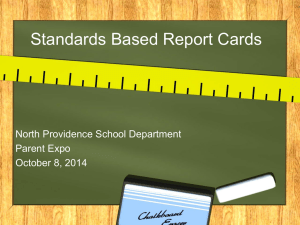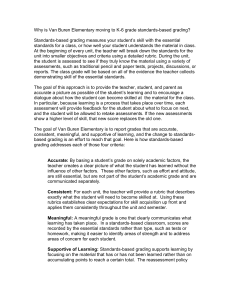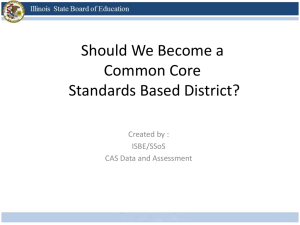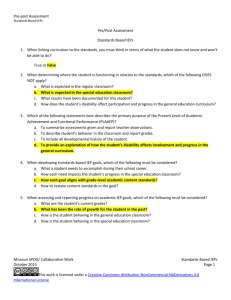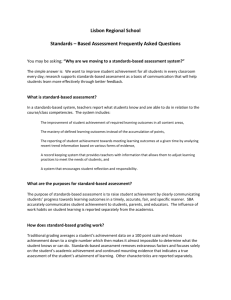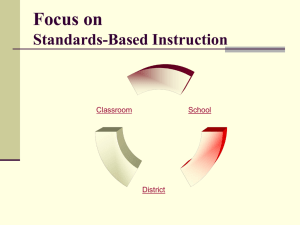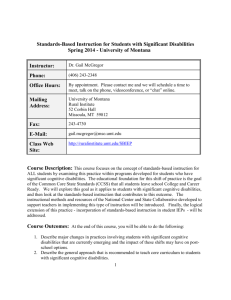Assistive Technology Evaluation- Annotated Bibliography for group
advertisement
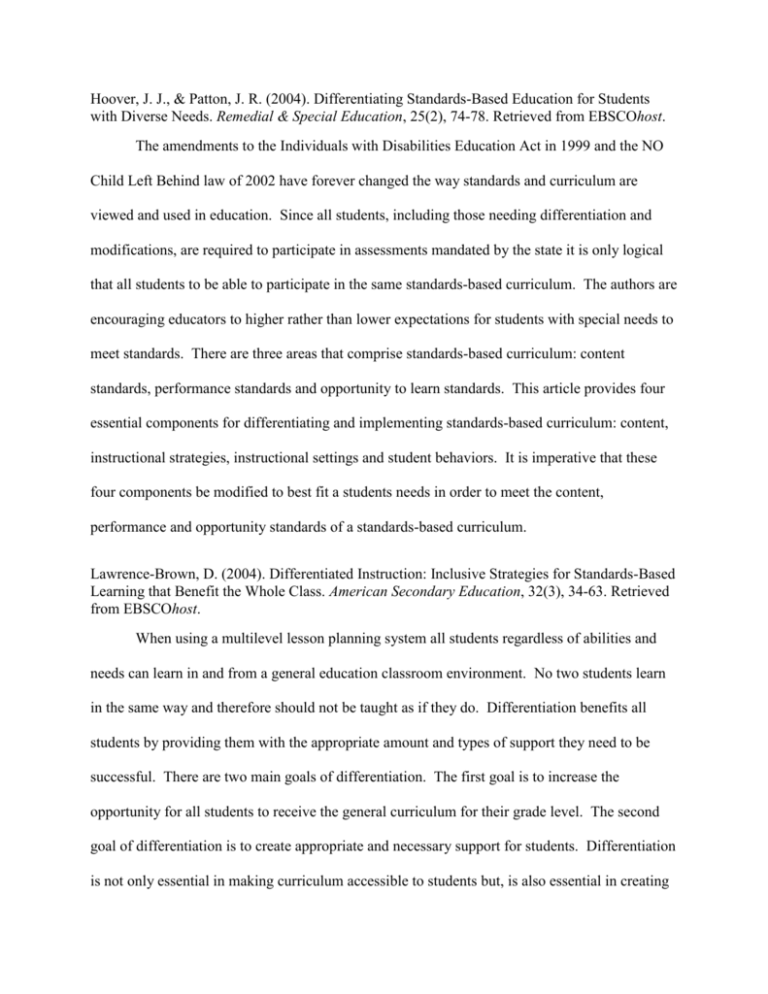
Hoover, J. J., & Patton, J. R. (2004). Differentiating Standards-Based Education for Students with Diverse Needs. Remedial & Special Education, 25(2), 74-78. Retrieved from EBSCOhost. The amendments to the Individuals with Disabilities Education Act in 1999 and the NO Child Left Behind law of 2002 have forever changed the way standards and curriculum are viewed and used in education. Since all students, including those needing differentiation and modifications, are required to participate in assessments mandated by the state it is only logical that all students to be able to participate in the same standards-based curriculum. The authors are encouraging educators to higher rather than lower expectations for students with special needs to meet standards. There are three areas that comprise standards-based curriculum: content standards, performance standards and opportunity to learn standards. This article provides four essential components for differentiating and implementing standards-based curriculum: content, instructional strategies, instructional settings and student behaviors. It is imperative that these four components be modified to best fit a students needs in order to meet the content, performance and opportunity standards of a standards-based curriculum. Lawrence-Brown, D. (2004). Differentiated Instruction: Inclusive Strategies for Standards-Based Learning that Benefit the Whole Class. American Secondary Education, 32(3), 34-63. Retrieved from EBSCOhost. When using a multilevel lesson planning system all students regardless of abilities and needs can learn in and from a general education classroom environment. No two students learn in the same way and therefore should not be taught as if they do. Differentiation benefits all students by providing them with the appropriate amount and types of support they need to be successful. There are two main goals of differentiation. The first goal is to increase the opportunity for all students to receive the general curriculum for their grade level. The second goal of differentiation is to create appropriate and necessary support for students. Differentiation is not only essential in making curriculum accessible to students but, is also essential in creating multiple means for assessing what a student knows and understands. Today, assistive technologies offer numerous possibilities for educators to ensure that students are successful in their education. Voltz, D. L., Sims, M., Nelson, B., & Bivens, C. (2005). M<sup>2</sup>ECCA: A Framework for Inclusion in the Context of Standards-Based Reform. Teaching Exceptional Children, 37(5), 14-19. Retrieved from EBSCOhost. The M²ECCA framework was created to aid teachers in an inclusive classroom setting to appropriately and effectively incorporate standards-based curriculum for all their students. M²ECCA stands for the five key elements that make up its framework. The five key elements are: Methods of instruction, Materials of instruction, Environment of the classroom, Content of instruction, Collaboration, Assessment. This article provides an in-depth depiction for implementing a standards-based curriculum in an inclusive classroom environment. The way in which a teacher teaches significantly affects their students and the level of success they achieve throughout the school year. Assistive Technologies provide many options for students who learn in a variety of ways. Assistive Technology enables teachers to support students’ needs within the classroom. Universal Design for Learning should be integrated into all classrooms. Universal Design makes standards-based curriculum accessible to all students in inclusive settings. Staugler, K. (2008, February). Research Review Summary [Standards-Based Curriculum for Students with Significant Disabilities]. Retrieved from Unique Learning System website: http://unique.n2y.com/uniqueResearch.pdf This article provides compelling and research backed information for the necessity for standards-based curriculum for students with significant disabilities. Due to the 1997 amendments to IDEA and No Child Left Behind requiring schools to increase learning and teaching, as well as, requiring all students to be involved in general curriculum; standards-based curriculum needs to be appropriate and accessible to all students. Students with Disabilities are not receiving enough curriculum modifications necessary for them to be successful using general education curriculum. In order for students with disabilities to learn from the general education curriculum they need to have access to curriculum and learning opportunities. Students with disabilities have been found to participate in more state standard tasks and activities, with modifications and support, when included in the general education setting than in a selfcontained setting. Therefore, there should not be lower expectations for students with disabilities to learn than their peers. Teachers and educational teams can use knowledge and data on students with disabilities to pair general curriculum to individual students’ goals. Further research needs to be done to determine the impact that No Child Left Behind and state standards have had on students with disabilities.


